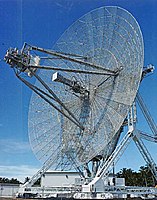
Photo from wikipedia
Due to the complexity of the underwater environment, underwater acoustic target recognition (UATR) has always been challenging. Although deep neural networks (DNN) have been used in UATR and some achievements… Click to show full abstract
Due to the complexity of the underwater environment, underwater acoustic target recognition (UATR) has always been challenging. Although deep neural networks (DNN) have been used in UATR and some achievements have been made, the performance is not satisfactory when recognizing underwater targets with different Doppler shifts, signal-to-noise ratios (SNR), and interferences. In the paper, a one-dimensional convolutional neural network (1D-CNN) was proposed to recognize the line spectrums of Detection of Envelope Modulation on Noise (DEMON) spectrums of underwater target-radiated noise. Datasets of targets with different Doppler shifts, SNRs, and interferences were designed to evaluate the generalization performance of the proposed CNN. Experimental results show that compared with traditional multilayer perceptron (MLP) networks, the 1D-CNN model better performs in recognition of targets with different Doppler shifts and SNRs. The outstanding generalization ability of the proposed model shows that it is suitable for practical engineering applications.
Journal Title: Computational Intelligence and Neuroscience
Year Published: 2020
Link to full text (if available)
Share on Social Media: Sign Up to like & get
recommendations!